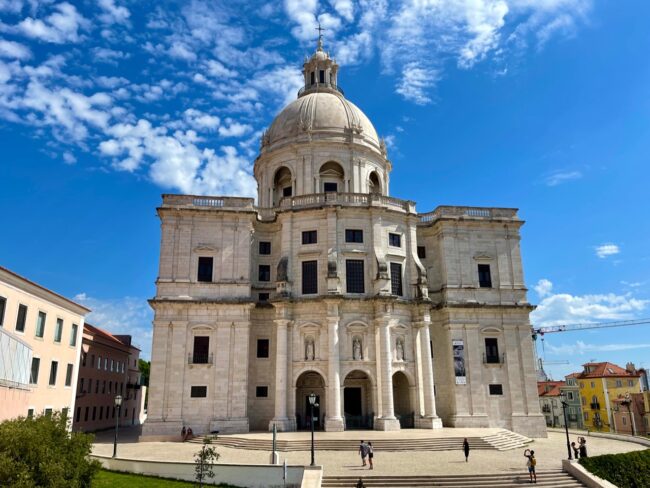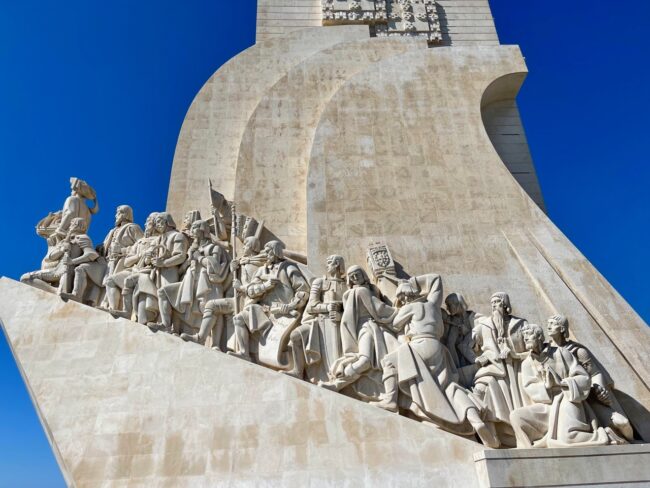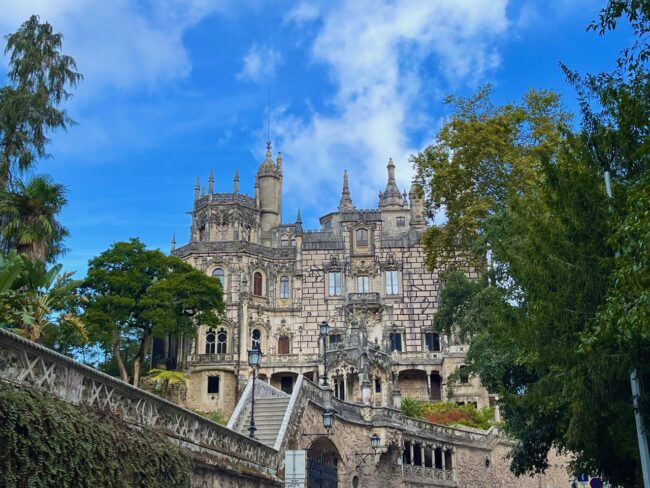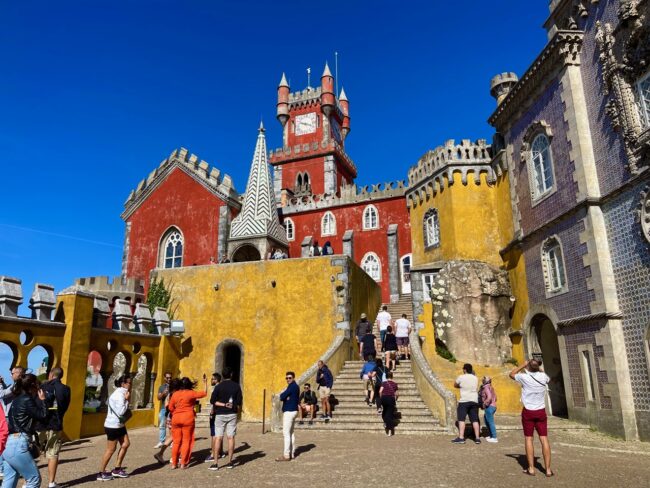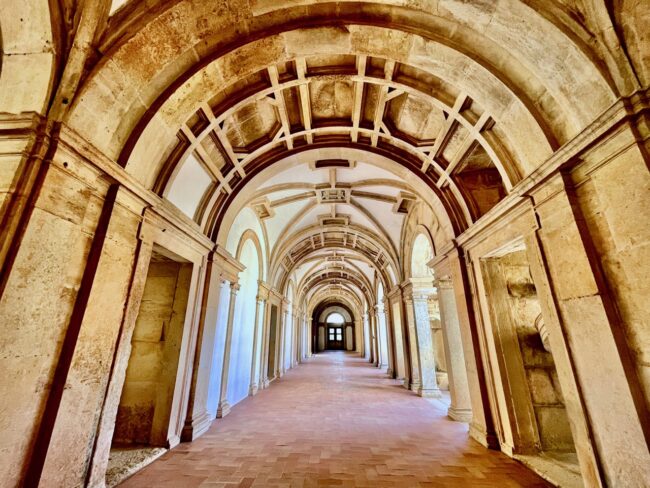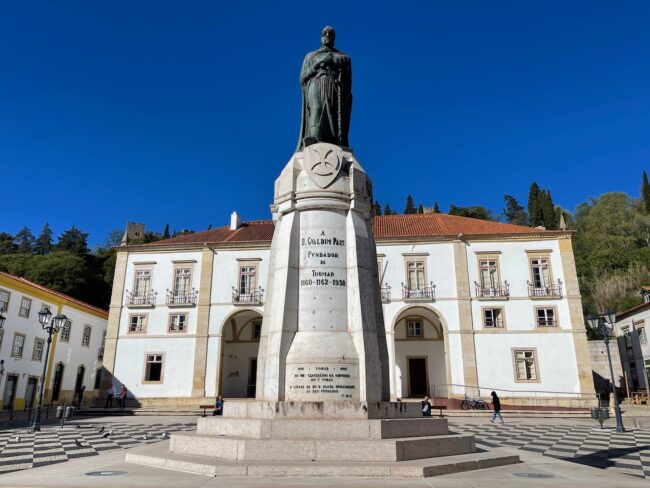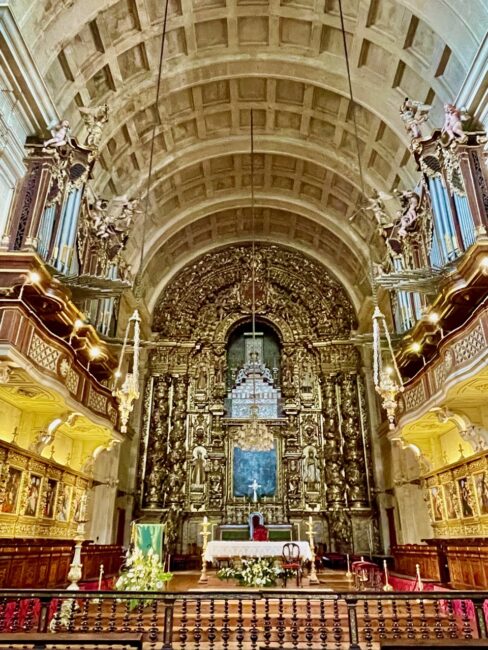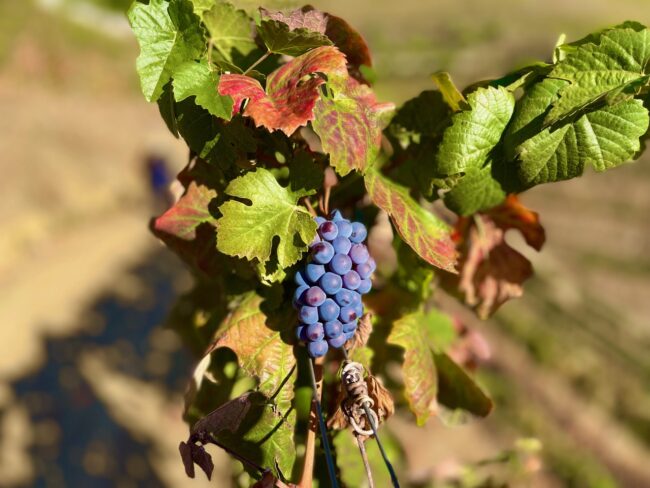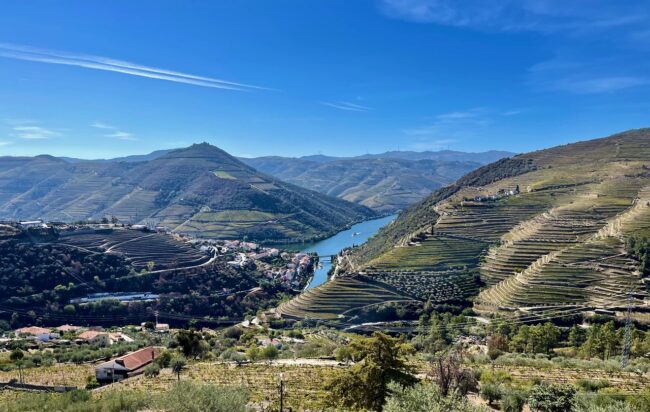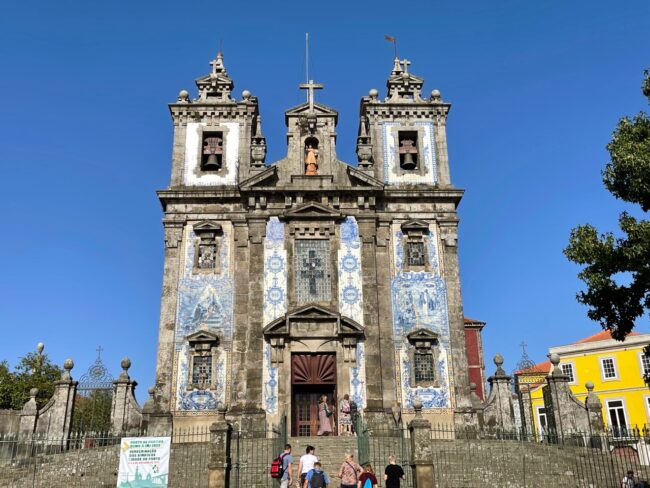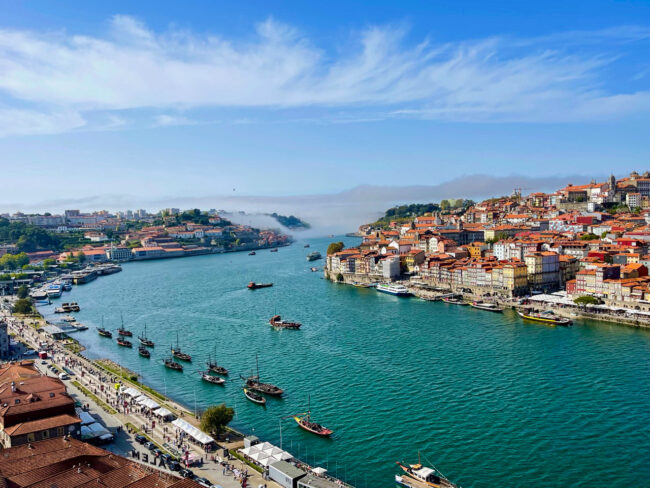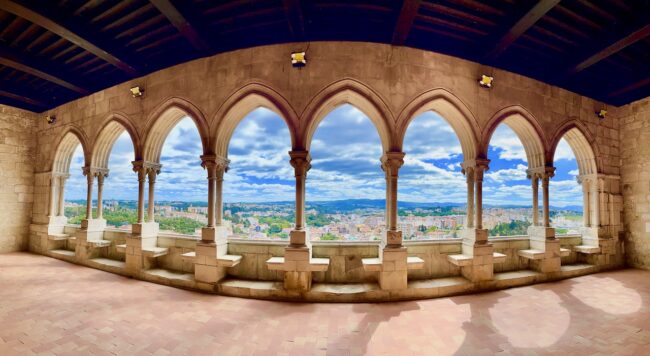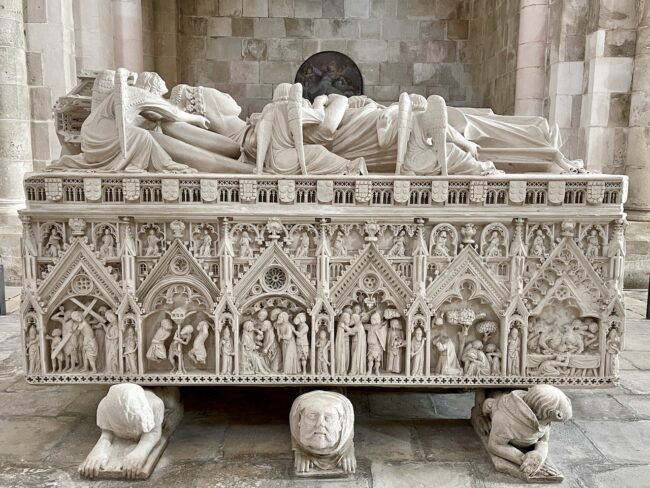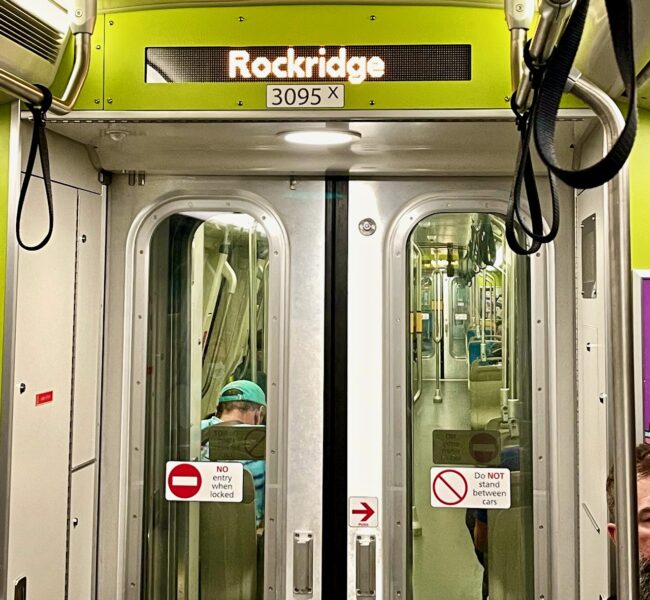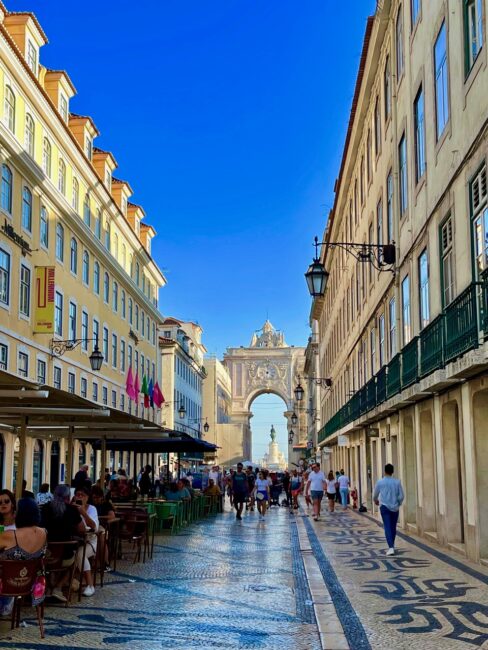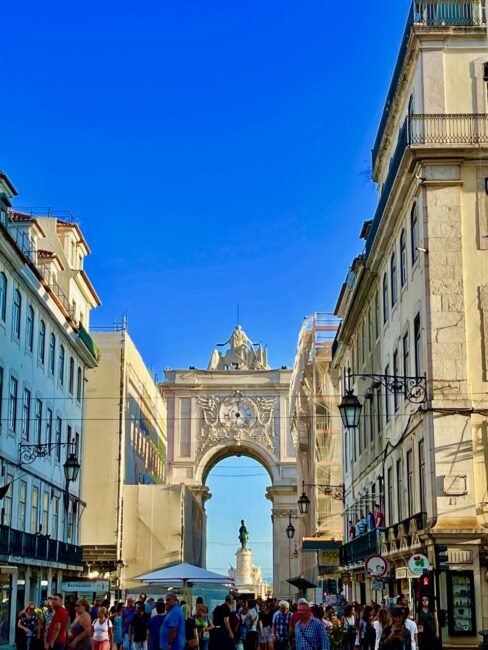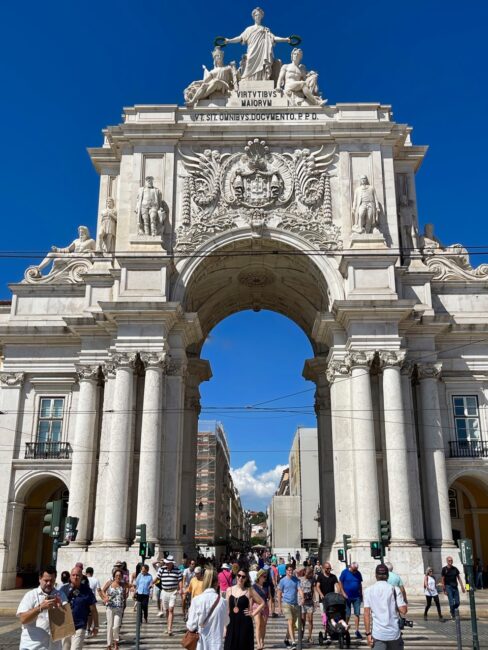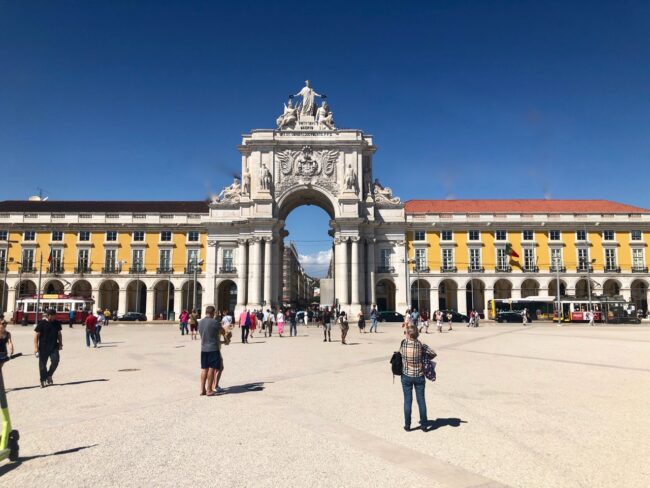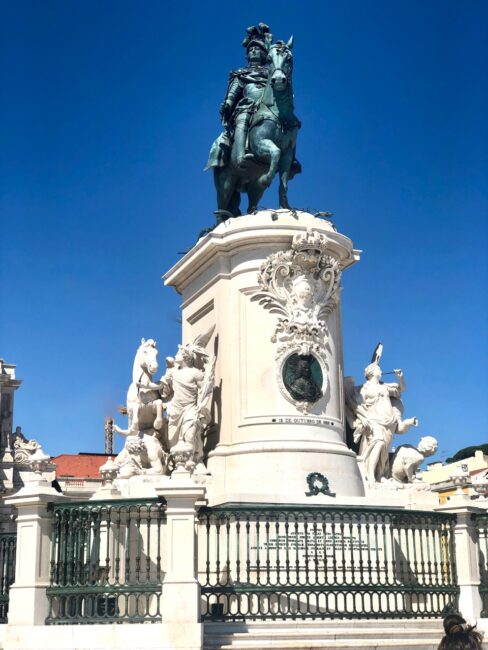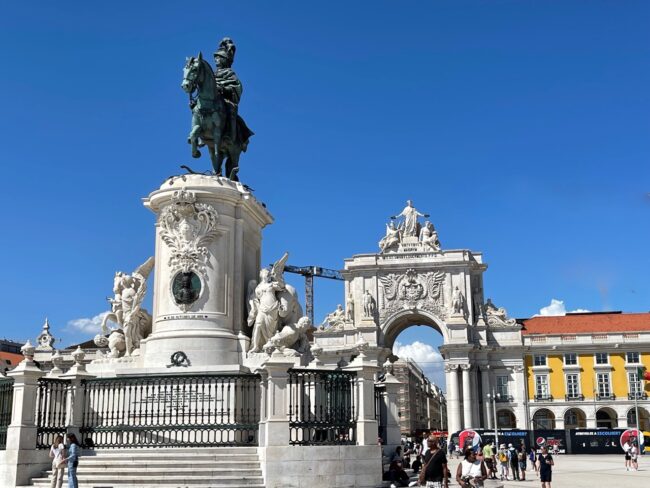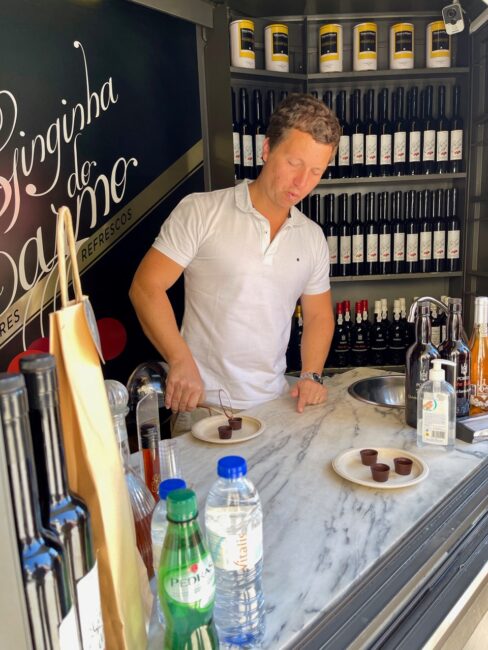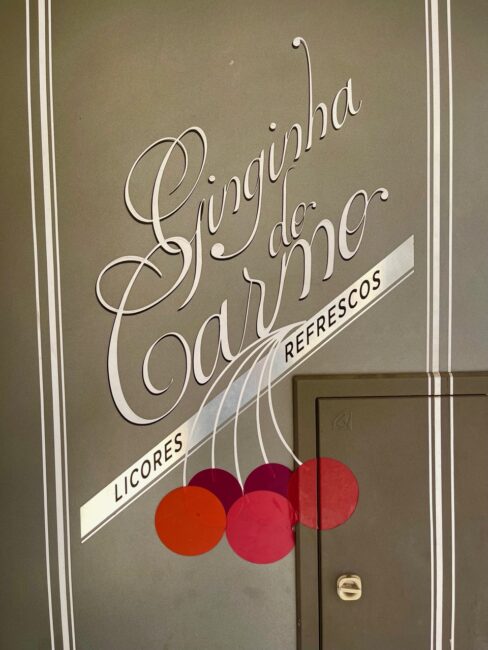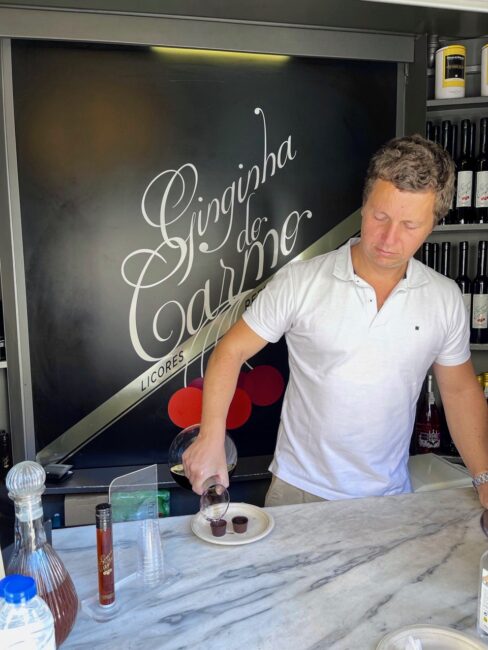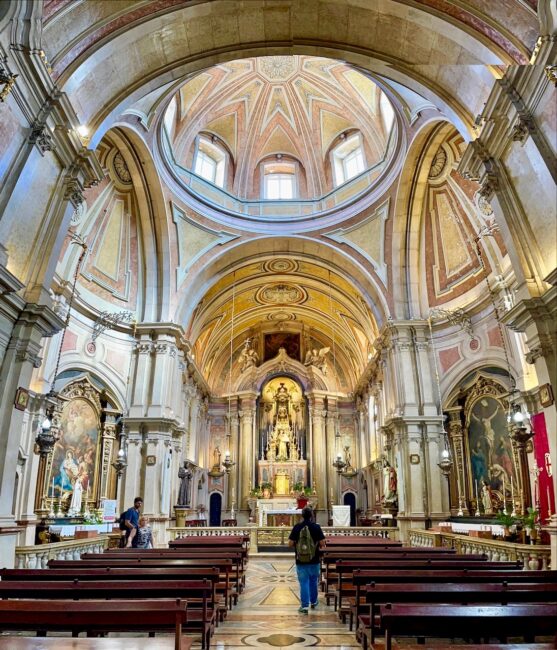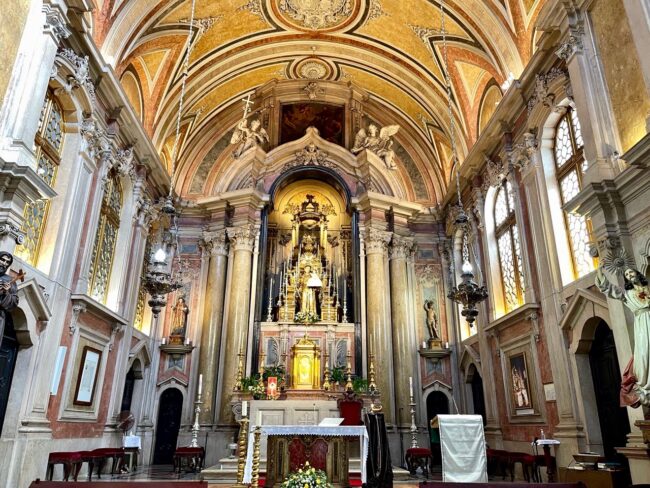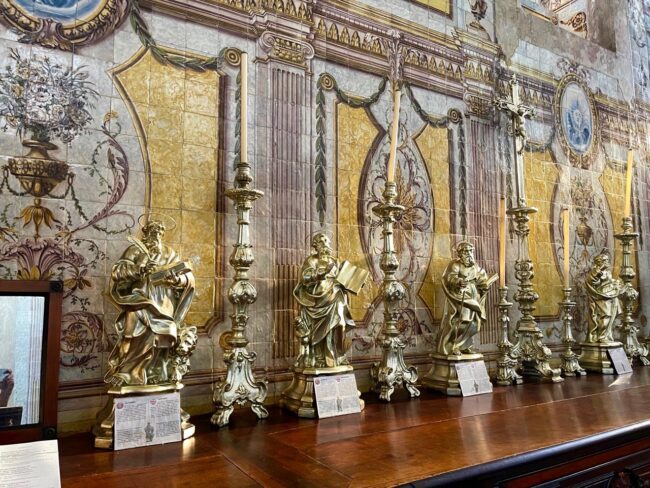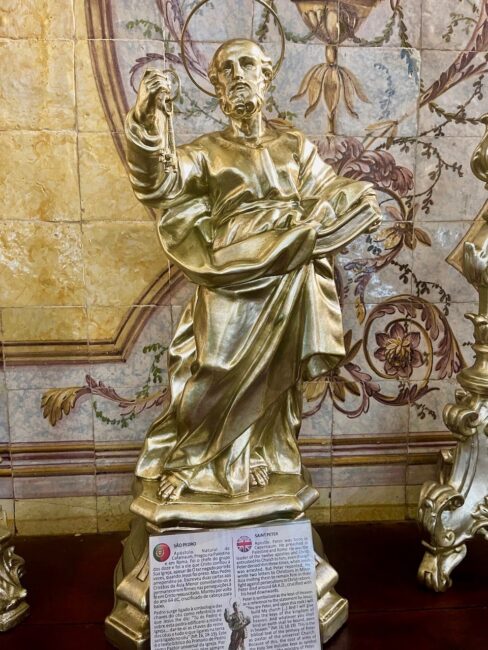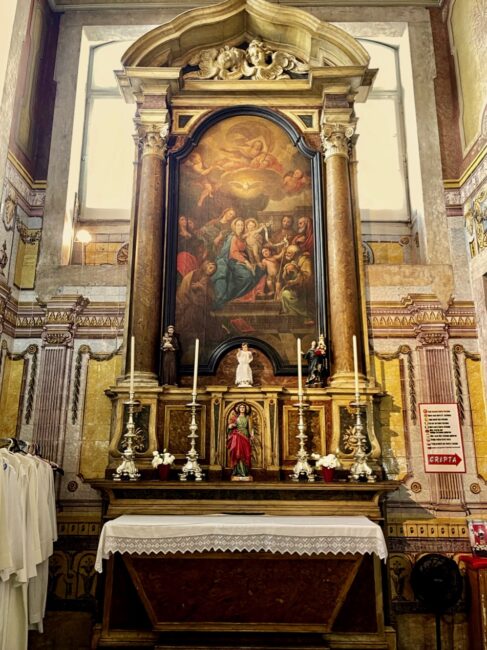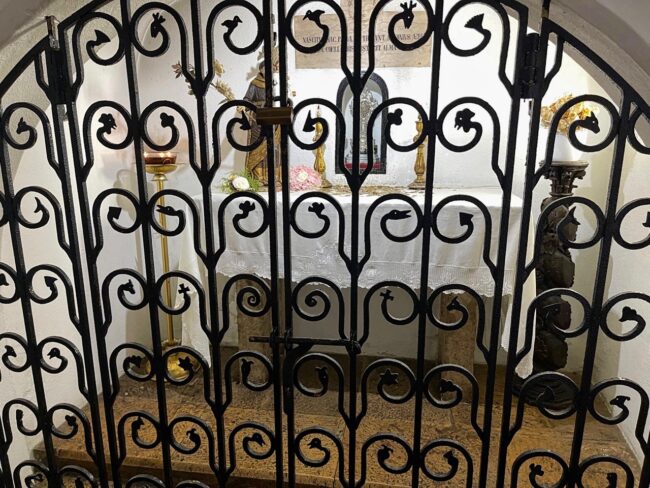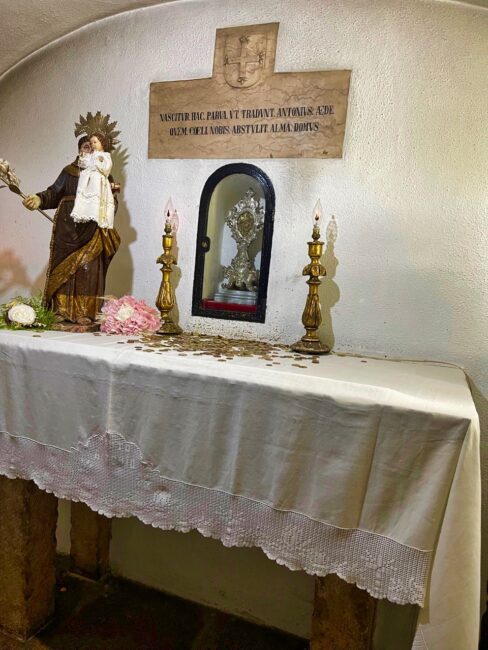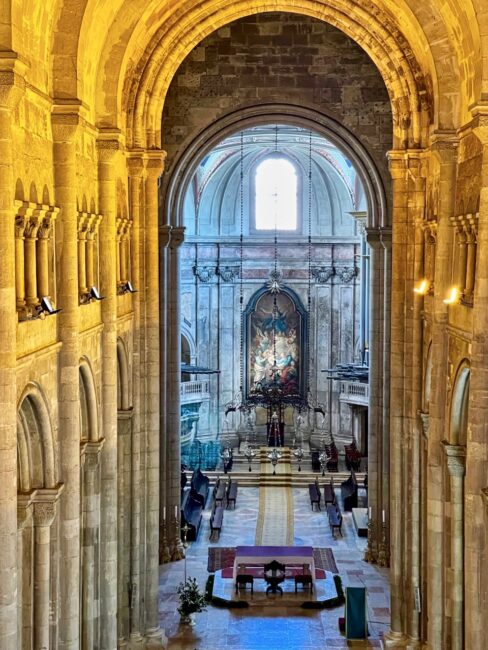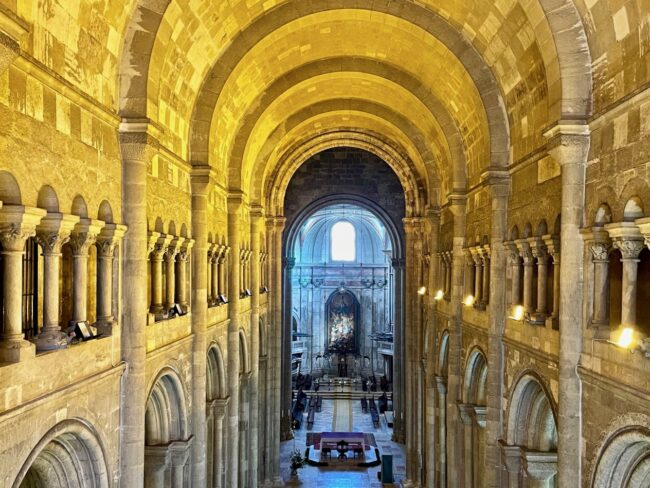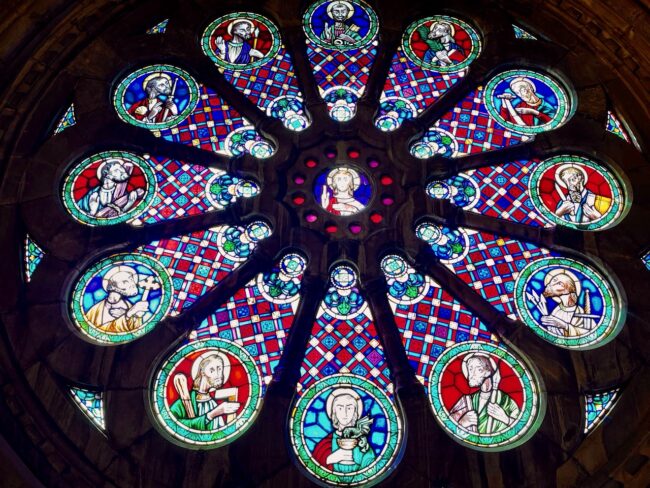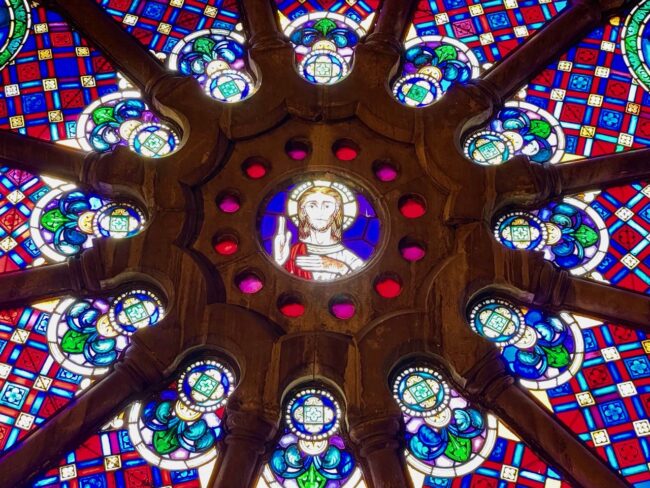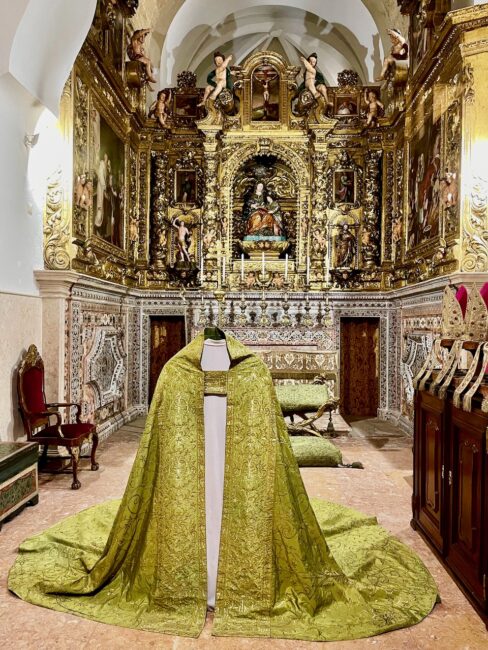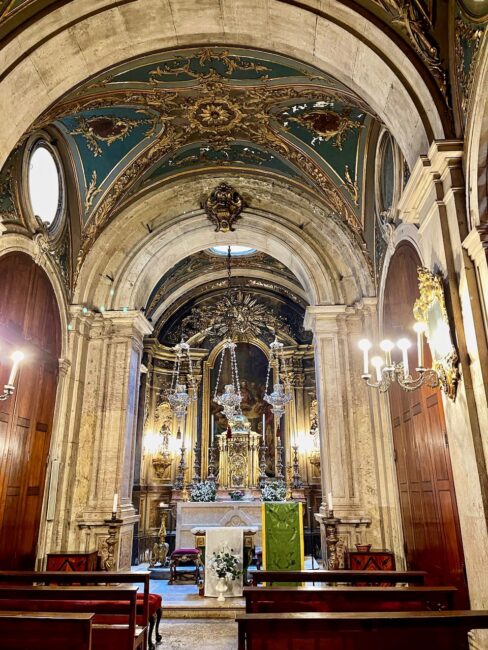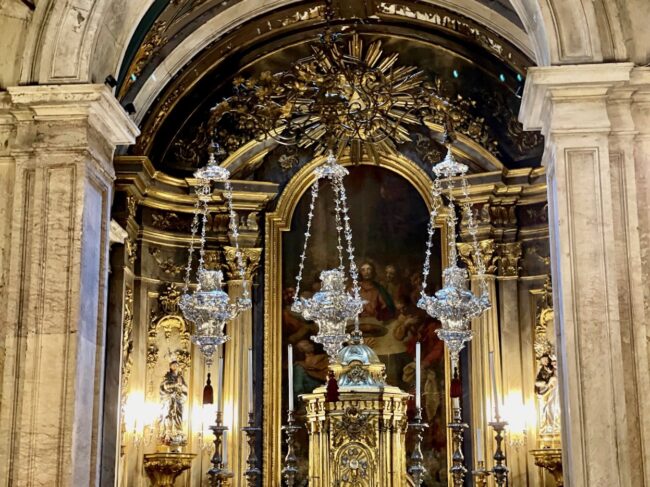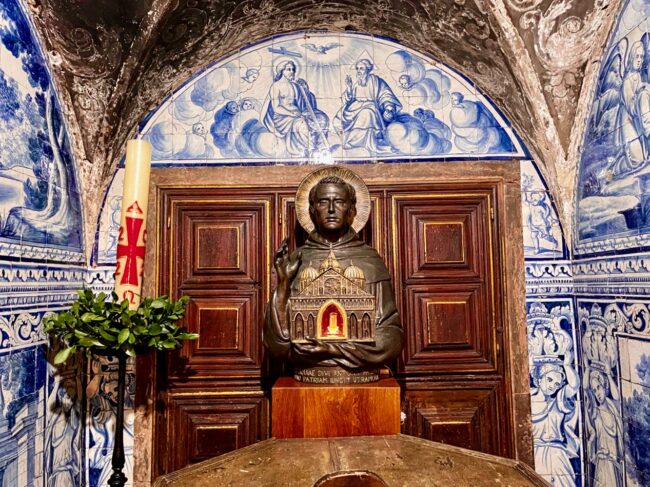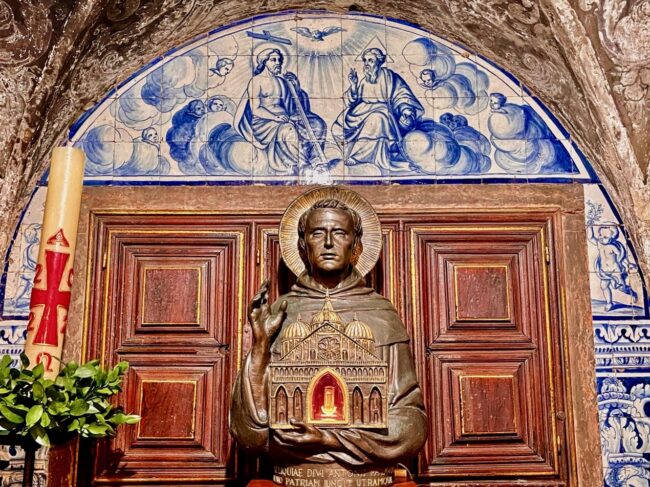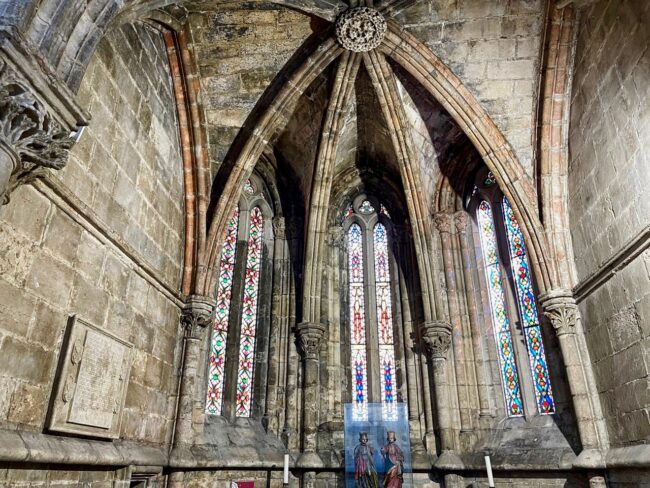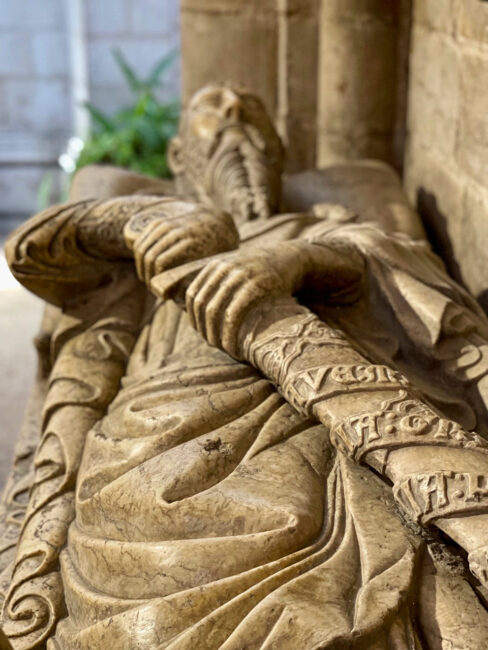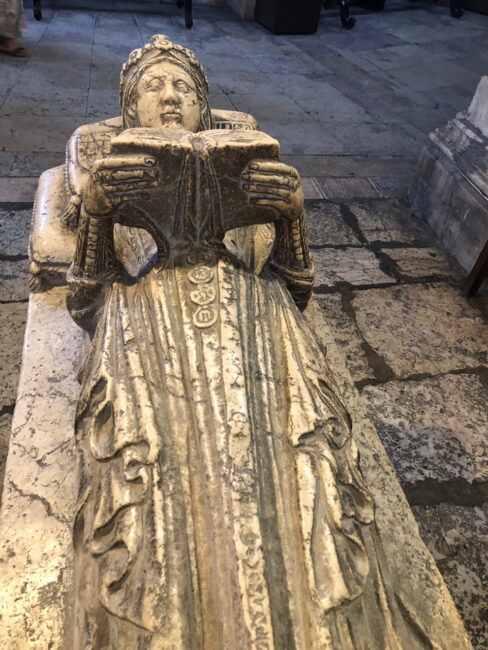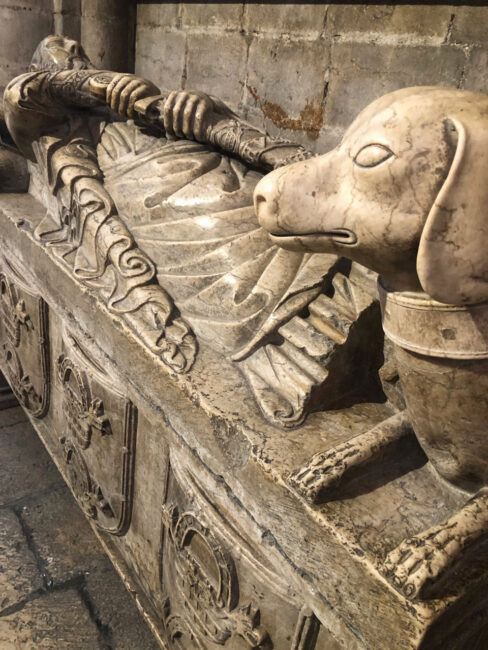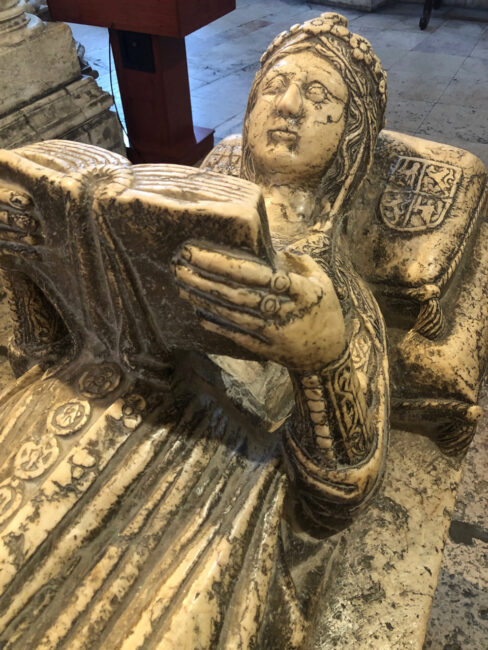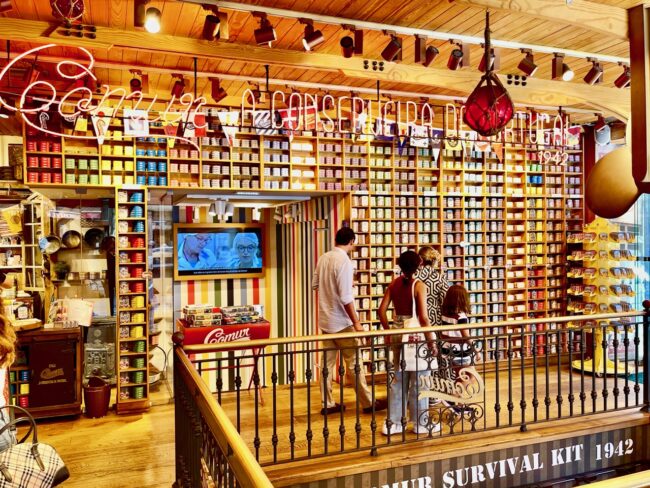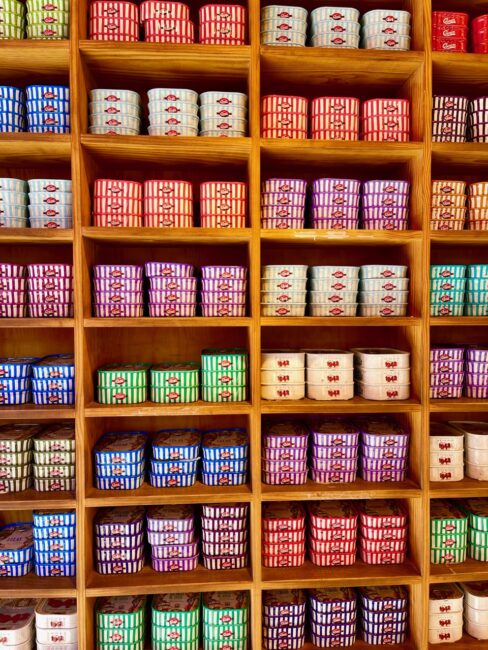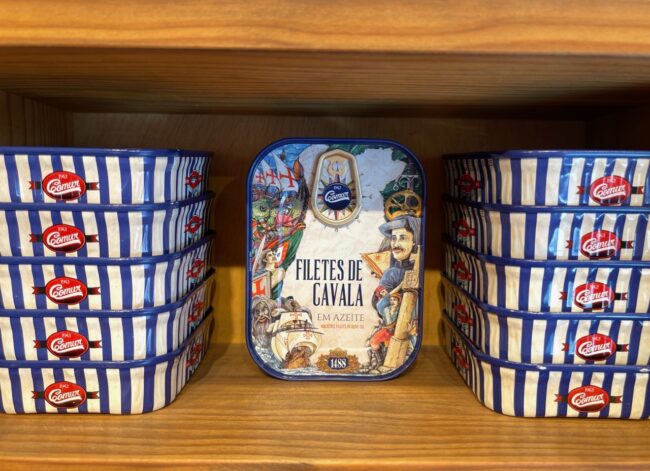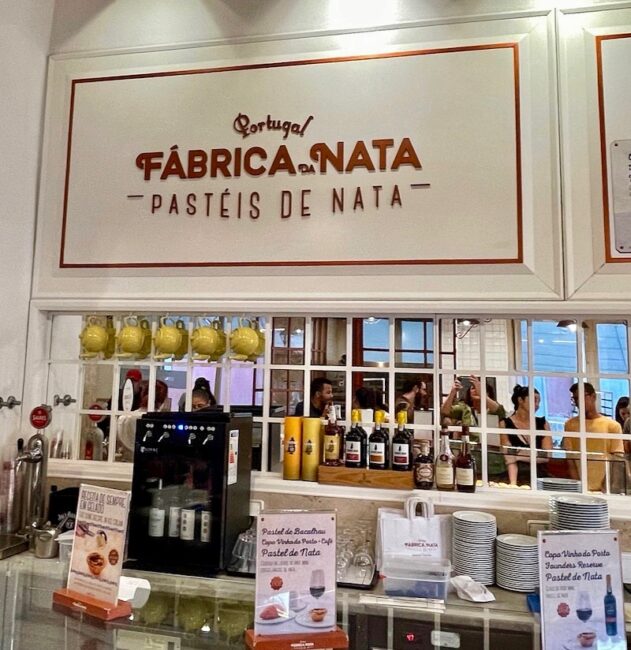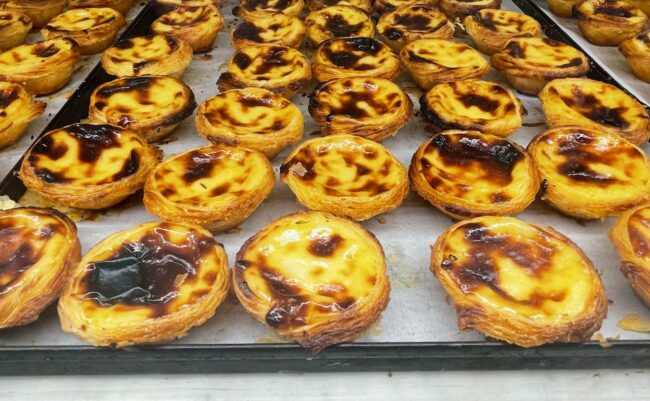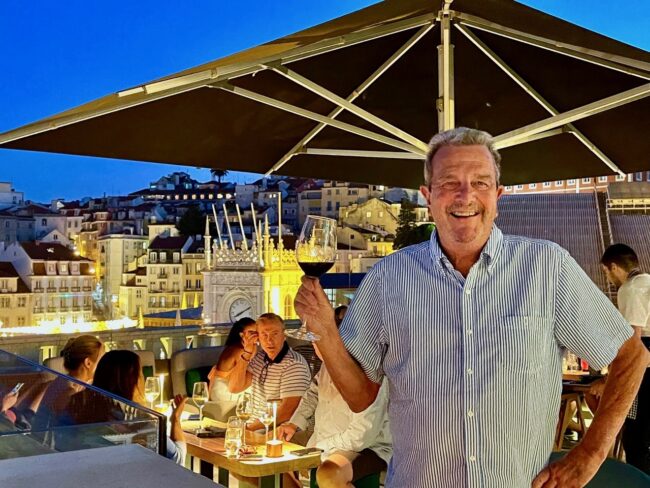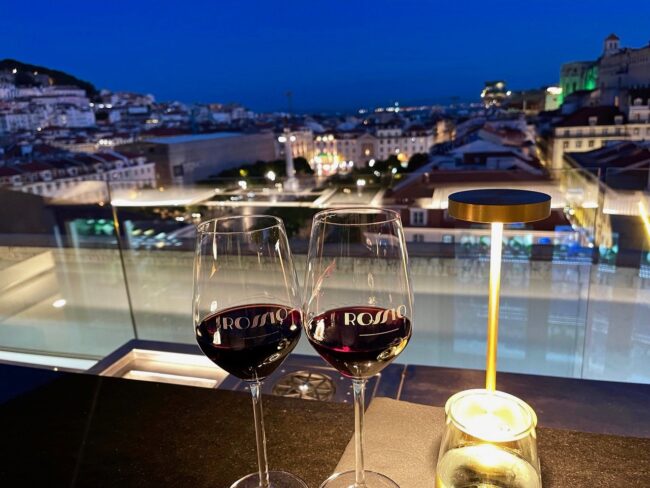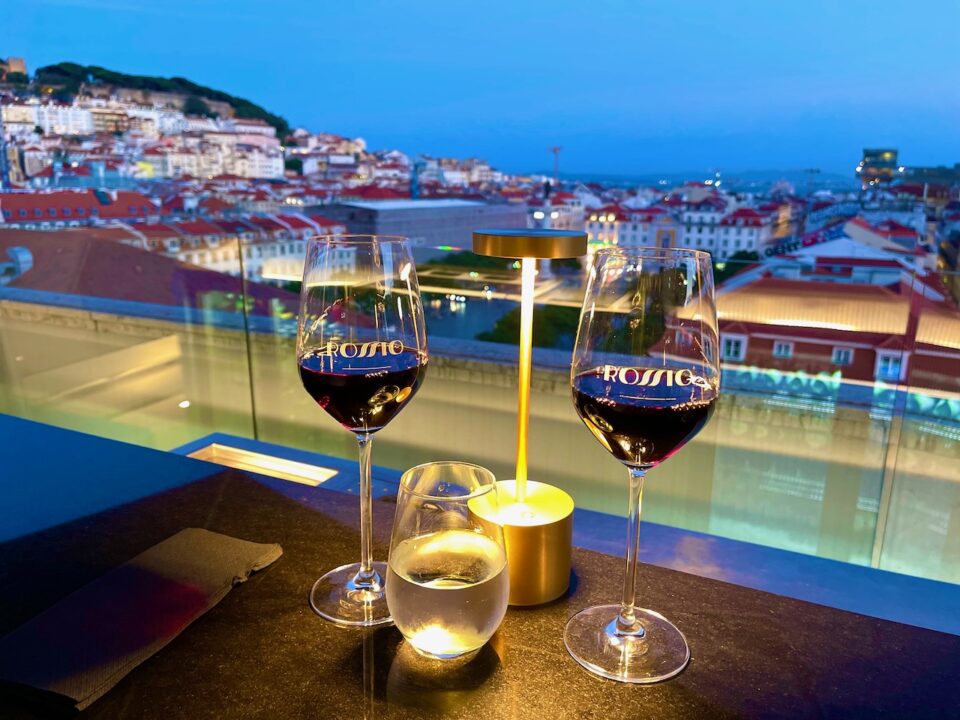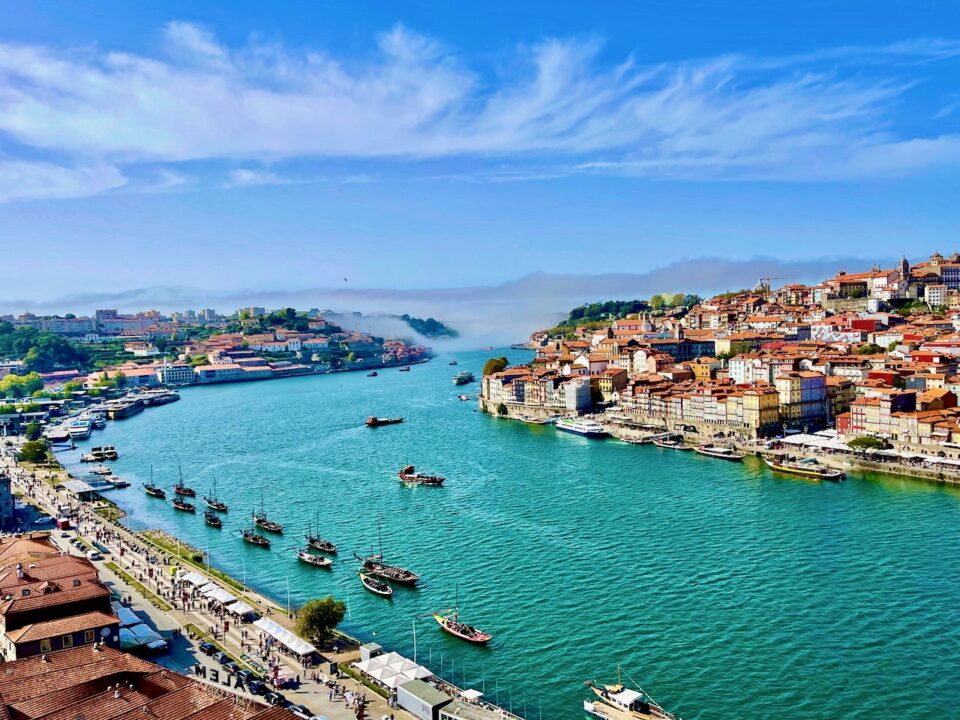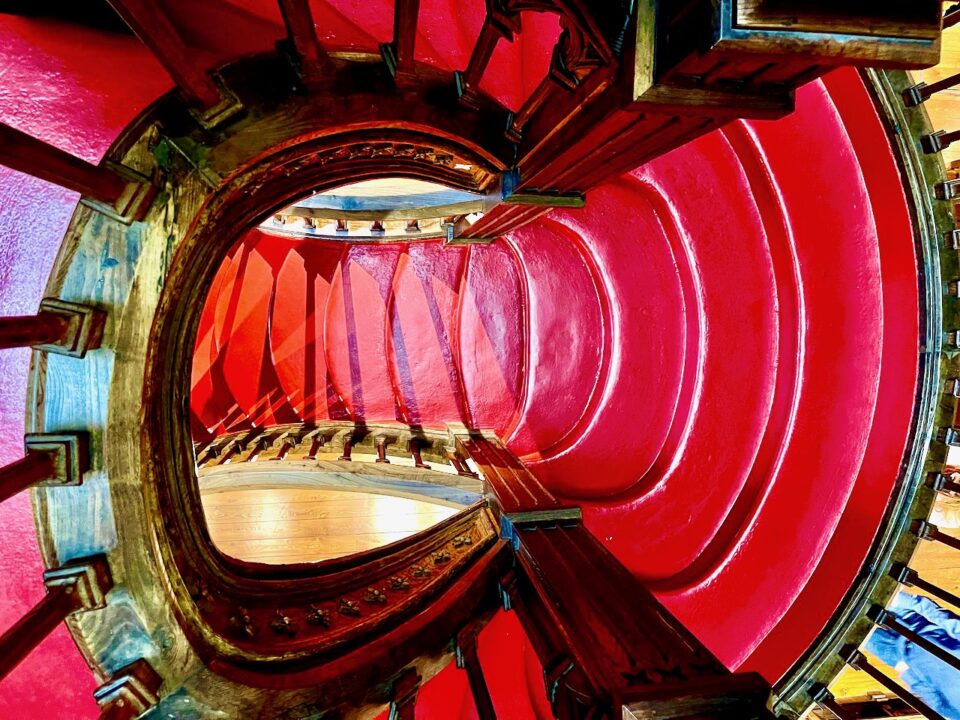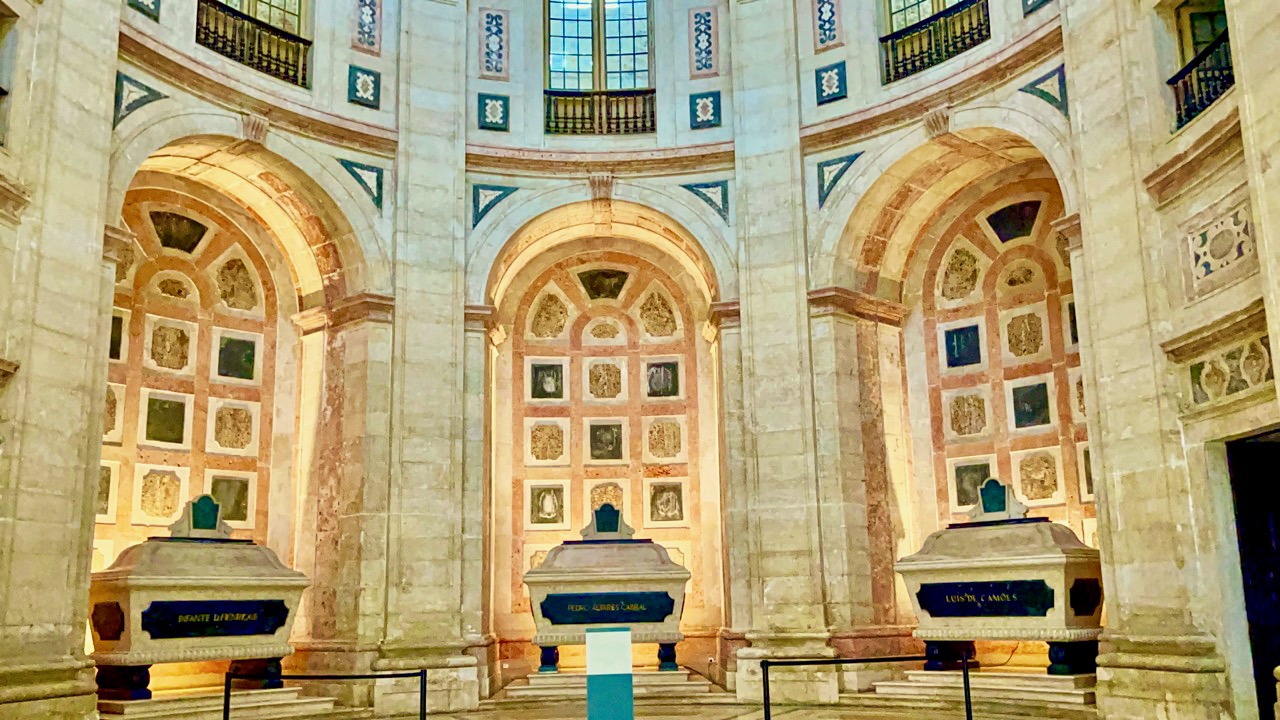
Chapter Two: Exploring Lisbon
November 23, 2022Falling For Portugal: A Mai Tai Tom “Trip” Report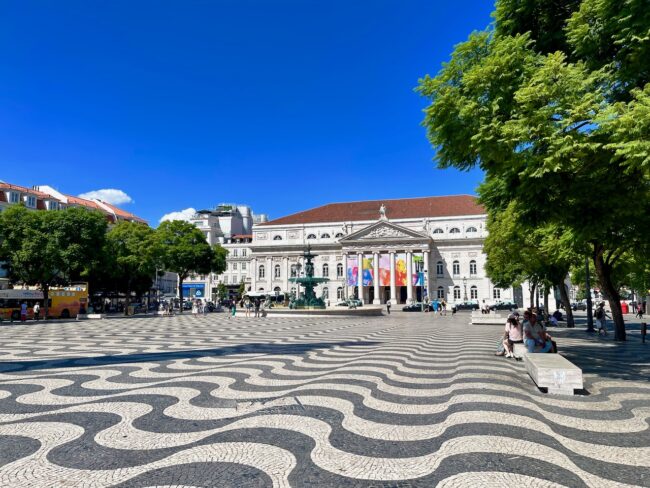
Chapter One: Finally Lisbon!
Prologue: The Third Time Really Is The Charm
After having to postpone Portugal twice due to Covid, we (Tracy and I, along with friends Kim and Mary) finally were able to travel to a country we had long wanted to visit. As we soon discovered, so did seemingly every other person from around the globe
We started out with six nights in Lisbon …
… three nights in Sintra …
… two nights in Tomar …
… two nights in Coimbra …
… four nights in the Douro Valley …
… and four nights in Porto …
… with a number of sights in between.
And when I say we “fell” for Portugal, well, you’ll find out I mean that both literally and figuratively. We enjoyed numerous attractions, absolutely loved the food and the people, and could see why it has become such a popular destination. However, I will also throw in a couple of caveats along the way. And Awaaaaay We Go!
DAY ONE: Honk If You’re In Lisbon, Closed For Cleaning, Doing The Wave, A Rewarding Arch, Of All the Ginjinha Joints in All the World, Saint Be Praised, Lisbon’s Oldest Church, Fan Scam, Packed In Like A Can Of You Know What, Piri Review, Nata Bad Idea and Up On The Roof
A trip that had been three years in the making was about to come to fruition. By the time we reached our various Portugal hotels, I felt like I knew the people at each one of them since we had to reserve, cancel and re-reserve so many times since 2019. Due to lost luggage issues at so many airports during the summer, Tracy and I decided to fly non-stop from San Francisco to Lisbon on TAP Airlines. We hopped on the BART in Orinda, traveled through Rockridge (no sighting of Sheriff Bart though), and, unlike L.A.’s mess of a mass transit system, the journey ended inside the International Terminal at SFO, whereas L.A.’s drops you off in El Segundo and then you have to find transportation to the airport. [Mai Tai Tom digression: Hard to believe BART was celebrating its 50th Anniversary and this is the first time we’ve taken it!]
TAP’s website leaves a lot to be desired, and we were unable to get our boarding passes until we got to the airport. However when Tracy tried … no luck. For those that have followed our trips, despite having Global Entry, Tracy is always singled out by security. This time would be no different. She was taken out of line for a full security check. After confirming she still isn’t a terrorist, Tracy was let go, and we had a good lunch at the Napa Valley Mustard Seed.
The flight was delayed for maintenance issues for about 45 minutes, but any flight that doesn’t end up in the ocean is a good flight to me,(although TAP might consider a new chef). We arrived in Lisbon a little after 11 a.m. and met up with Kim and Mary who had flown from Boston. Getting through passport control and customs at Lisbon International Airport was a snap, and we thought we’d get an earlier start to our day than we expected. Then we saw the taxi line. It looked as if it stretched all the way to the Algarve, and it took about 45 minutes to eventually catch a cab. While in line, there was incessant honking by passing cars. As we would learn (and hear), honking your horn is a national pastime in Lisbon.
Our destination was the Altis Avenida Hotel, which is located across the street from the Praça dos Restauradores, a square that commemorates Portugal’s liberation from Spanish rule in 1640. It sits at the beginning of the tree-lined Avenida da Liberdade, which I would almost get to walk along a couple of days later, but due to unforeseen circumstances that never happened. On the square stands the Monumento de los Restauradores (Monument of the Restorers), an obelisk inaugurated in April of 1886. The figures represent Liberty and Victory.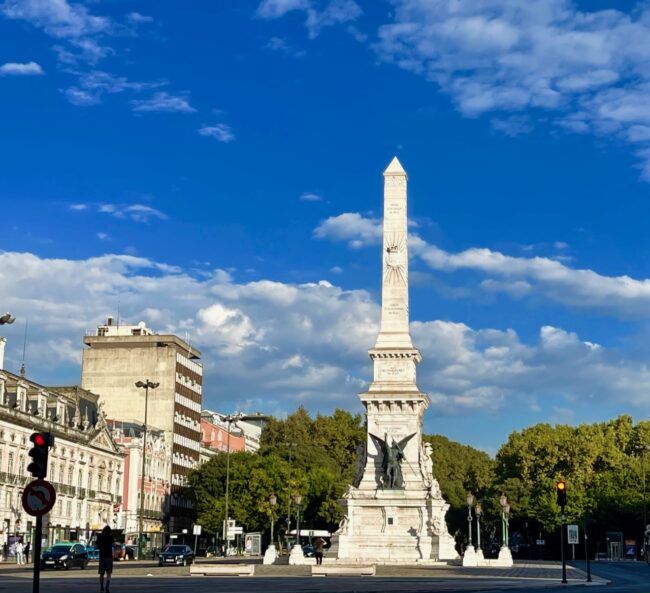
Our rooms at the Altis Avenida were not ready, so Tracy and I headed out to explore, while Kim and Mary walked in search of lunch (Tracy and I were still full of whatever it was that passed as breakfast on the plane). Since it was nearby, and figuring we could duck in a church without Kim and Mary (still reeling from church overload in Great Britain), we strolled over to the nearby Igreja de São Domingos, one of Lisbon’s oldest places of worship. Located very near to the Praça Dom Pedro IV, since its consecration in 1241 Igreja de São Domingos has survived two earthquakes, including the huge 1755 quake that caused damage by fire and a huge tidal wave.
Rebuilt, it again suffered from a blaze in 1959. Some of the fire-damaged interior remained visible after the church was restored, and I had wanted to visit to see, what some say is its “unique interior, which remains an endearing city landmark.” Unfortunately, a sign outside said the church was “closed for cleaning.” It remained closed for cleaning during our entire stay, so I’ll just have to take their word for it. I hope it is now the cleanest church in Lisbon.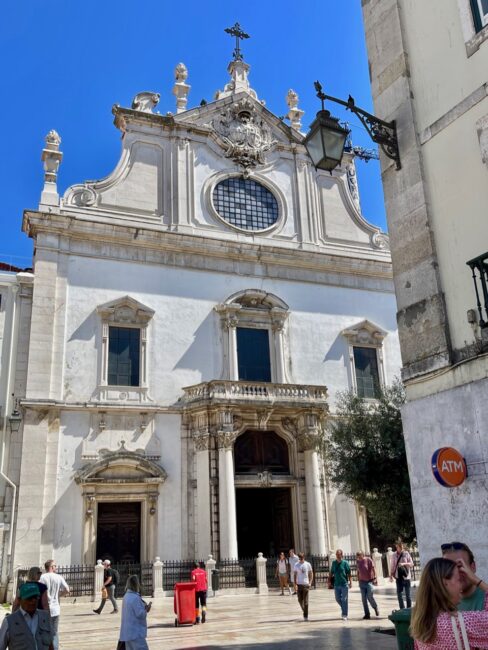
It was a blazing hot day, so Tracy and I started walking with some other of our Lisboa friends.
Looking upward, we spied a sign for a drink I had only had a passing knowledge of before we left. It wouldn’t take us long to find a spot to have a couple of cup fulls.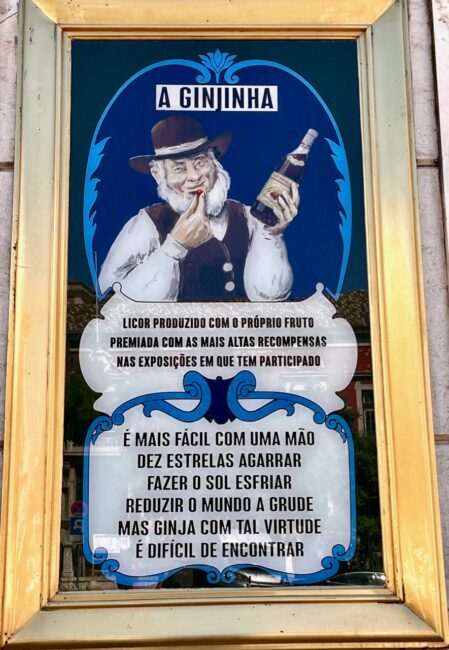
We walked through Praça de D. Pedro IV (aka Rossio Square). Called “the liveliest area in the capital of Portugal.” it wasn’t too lively today (perhaps people were looking for shade). The National Theater Dona Maria II stands at one end. Rossio Square is the largest public space in Lisbon, and during the Spanish Inquisition a number of people were burned to death here. It’s also where Carlos I and his son Felip were assassinated in 1908.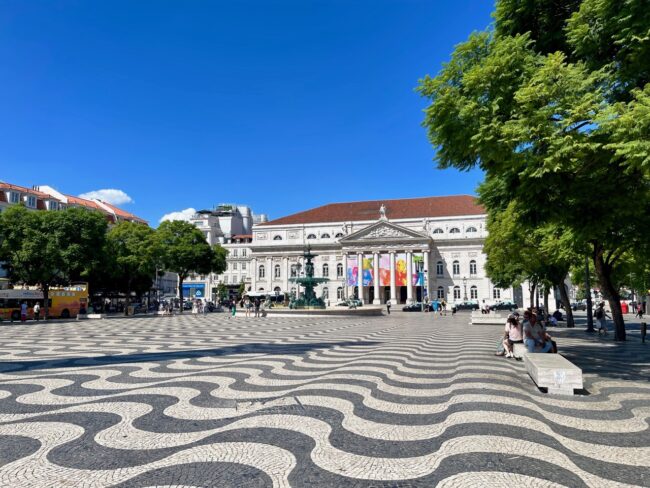
Fortunately, we were just getting sunburned. Then, for a minute, I thought I was having seizure, but soon realized I was walking on what looked like waves, or at least cobblestones laid out in wave patterns. The last time I had felt like this way was while walking after a night of drinking too many Manhattans. It was weirdly cool.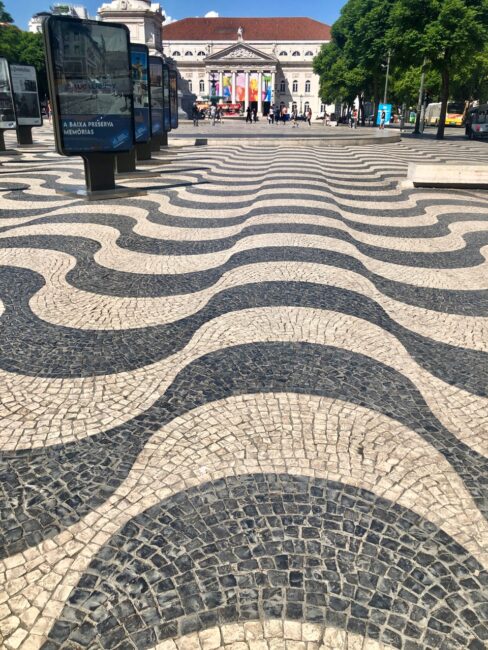
A couple of baroque fountains are located here.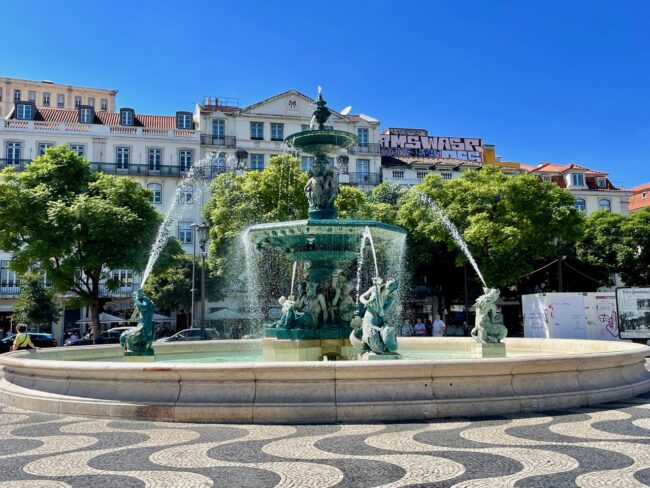
Before leaving, we looked to the monumental column honoring Pedro IV, known as “the Soldier King.” We then scurried off the cobblestones before we got seasick. 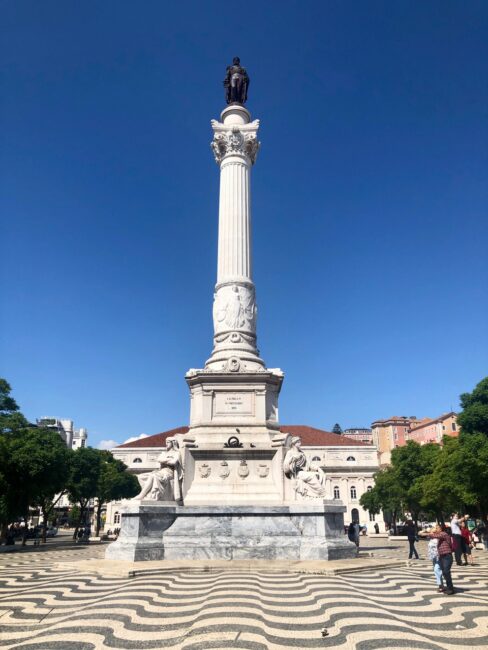
Up on the hill we got a glimpse of the Convento da Ordem do Carmo, which we would visit during our stay. 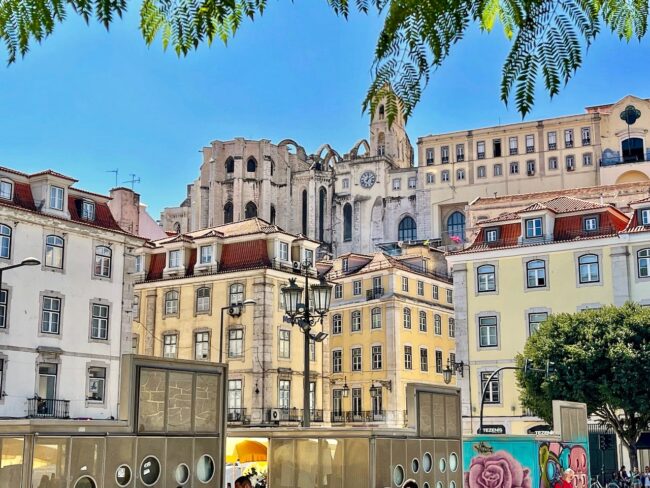
Now it was time to head down Rua Augusta, where we’d meet up with hundreds of others who had the same idea. We passed by the Elevador de Santa Justa, the famed 1902-inaugurated, neo-Gothic elevator that helps you eliminate stairs to get from the Baixa District to the Largo do Carmo. It’s also a tourist attraction with long lines, so we never took it. If it has similarities to the Eiffel Tower, that’s because it was built by Raoul Mesnire de Ponsard, who was an admirer of the work done by Gustave Eiffel.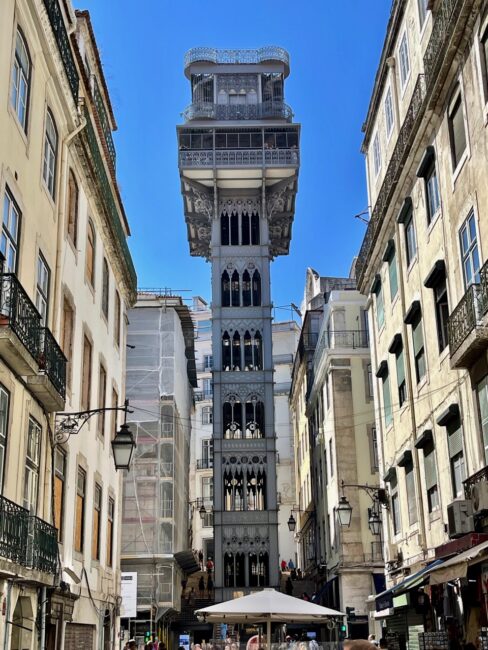
We passed by a store selling these Portugal favorites, but decided to save ourselves until after dinner. “Nata now,” I said.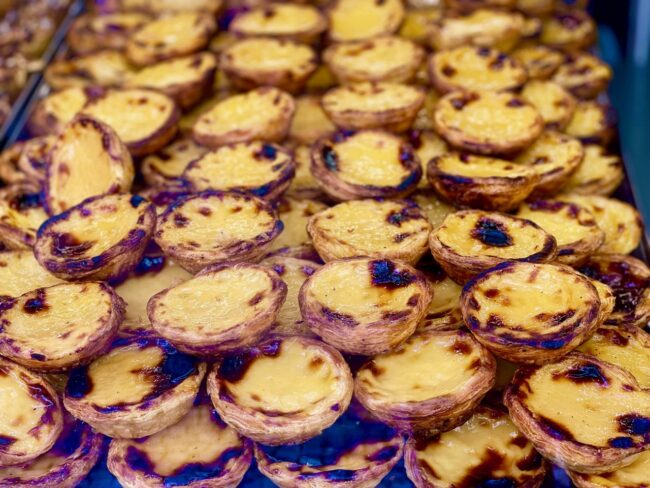
The crowds were fairly large during our entire stay in Lisbon, but that really didn’t bother us. We walked by musicians entertaining the massive throngs of people, and in the distance stood the Arco da Rua Augusta.
Soon we were at Lisbon’s gigantic riverfront square, Praça do Comércio. From here you get some terrific views of the 19th-century arch (Arco da Rua Augusta), constructed to mark the reconstruction of Lisbon after the 1755 earthquake. At the top, the sculptures represent Glory crowning Genius and Valor. As you can see, it’s also highlighted by a couple of huge cranes that hover nearby.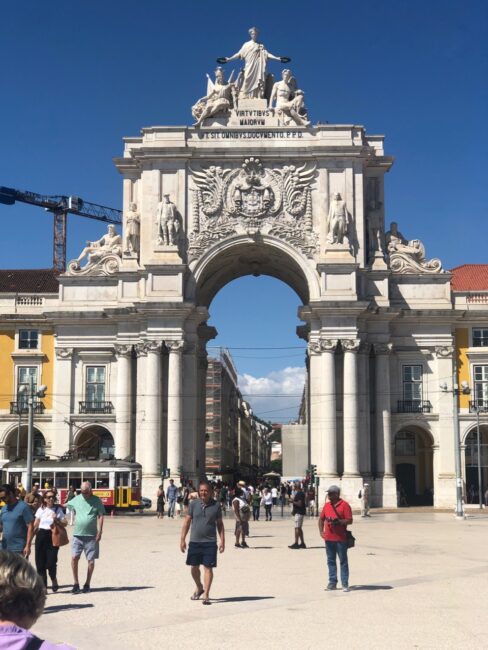
I closed my eyes to try and visualize what it would look like without cranes, and it worked. That and a little tinkering on the computer. Mai Tai Tom Confession: I have an inordinate fear of construction cranes.
Praça do Comércio was also nearly devoid of tourists. It sits next to the Tagus River, and as we got closer to the waterfront, the heat was much more tolerable. The bronze equestrian statue in the center is of King Joseph I, with the face of the Marquis du Pombal on the front, the leader who helped reconstruct Lisbon after the destructive 1755 quake. Ninety thousand people in Lisbon were killed in that earthquake.
We arrived on the edge of the square and a small kiosk caught our eye. People were sipping something out of tiny chocolate cups. Yes, we met our first Ginjinha. This addicting Portuguese liqueur is made by “infusing ginja berries (sour cherry, the Morello cherry) in alcohol and adding sugar together with other ingredients, with cloves and/or cinnamon sticks being the most common.” What’s not to like? For €1.40 we each got one Ginjinha in a dark chocolate cup. The man at the counter said not to eat the cup, because we could then get a second sip on the house. Then we could eat the cup. Tracy quickly dragged me away since I wanted to spend the entire afternoon sipping this magical potion.
Somehow, I declined entering the Beer Museum.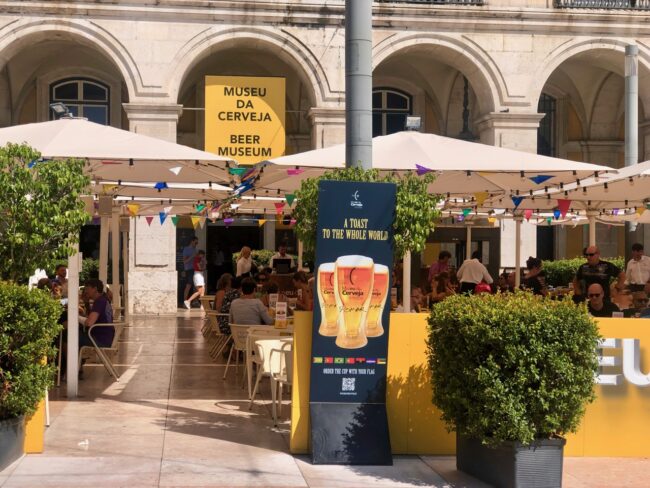
By now Kim and Mary had caught up to us, which meant they would at least have to see one church. We made the short walk over to Igreja de Santo Antonio, a church dedicated to Saint Anthony, the patron saint of Portugal. The church is cleverly disguised as a grand residence.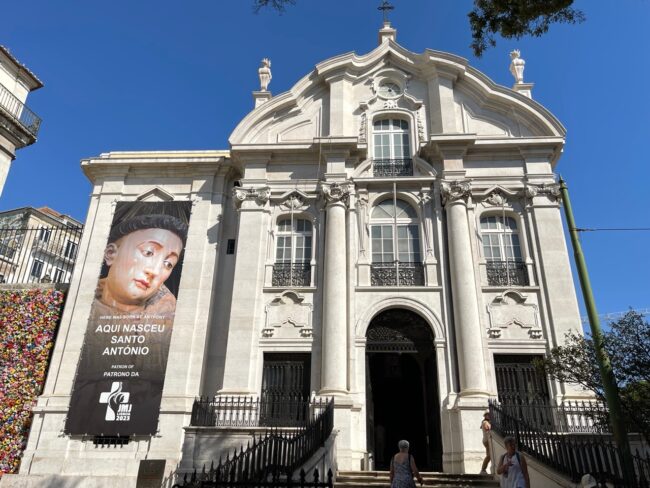
The church is located where St. Anthony was born. He is also the patron of lost and found, along with “being a matchmaker and protector of young brides.” The interior is relatively small and beautiful.
I walked back to the Sacristy, where you find a lot of gold saints ..
Down in the crypt is the birthplace of St. Anthony.
It seems there is also a tradition surrounding the statue of St. Anthony in front. It states that one can find a new (or better) partner in life by being able to throw a coin in the book of Saint Anthony on the statue. Now I know why Tracy had so many coins.
At this point, Kim and Mary left us because Kim had to attend a Zoom HOA Meeting, which is just one of the 1,000 reasons why I would never live in an HOA community.
Located just behind is the Sé de Lisboa, Basílica de Santa Maria Maior. The church dates back nearly 900 years and with its many modifications the church is a mix of Gothic, Romanesque and Baroque.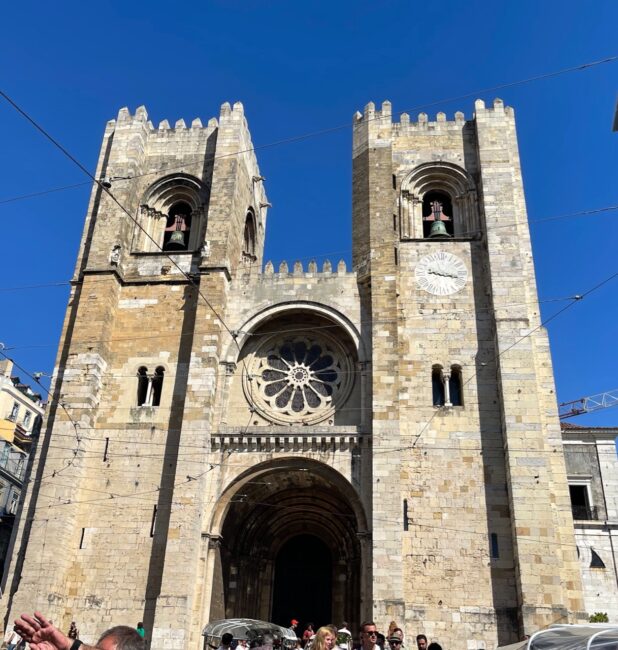
Enter on the first floor. It’s €5 to visit. From the High Choir there’s a great view of the barrel-vaulted interior and main chapel.
There is also an up close view of The Rosace With Romanesque Ornaments (or Rose Window) featuring the 12 Apostles around Jesus. That’s as close to a stained glass window as we’ve ever stood.
We visited the Treasury, where we saw, among other things, The Monstrance of the Lisbon Patriarchal Cathedral, a gift from King D. João V to the Patriarchal Cathedral of Lisbon. It’s made of 17 kilos of gold and more than 4,000 diamonds, rubies, sapphires and emeralds. It’s good to be king.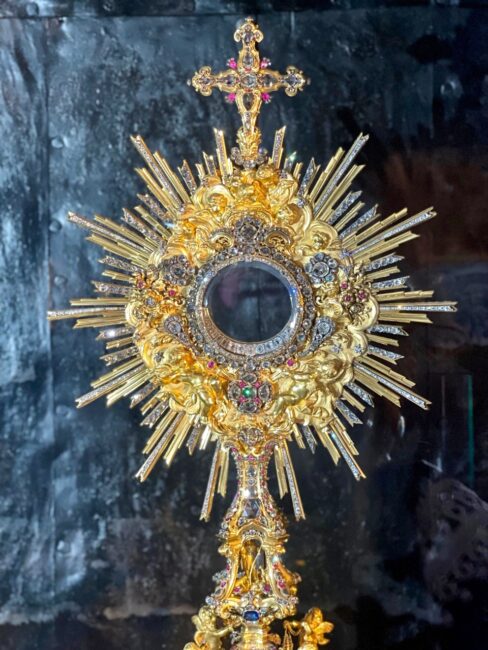
One stop was at the Patriarch’s Dressing Room, which, as the name denotes, is where the Patriarch got dressed. His robe is on display.
To the side are seven mitres representing the Suffragist Dioceses of Lisbon. St. Peter and St. Paul stand behind them.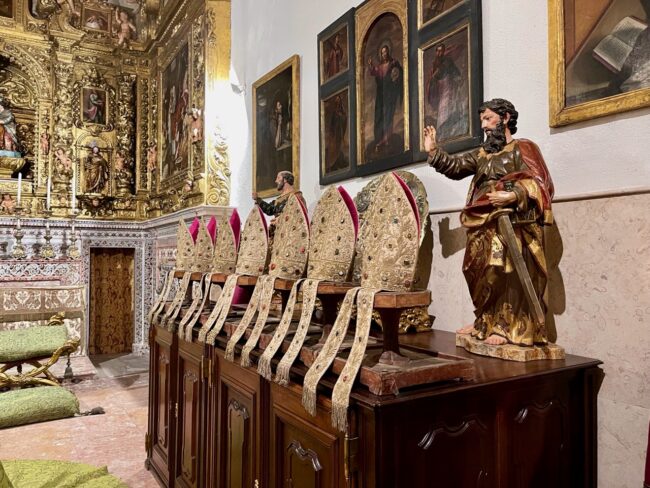
Then there’s the stunning sculpture of St. Anne with a young Virgin Mary.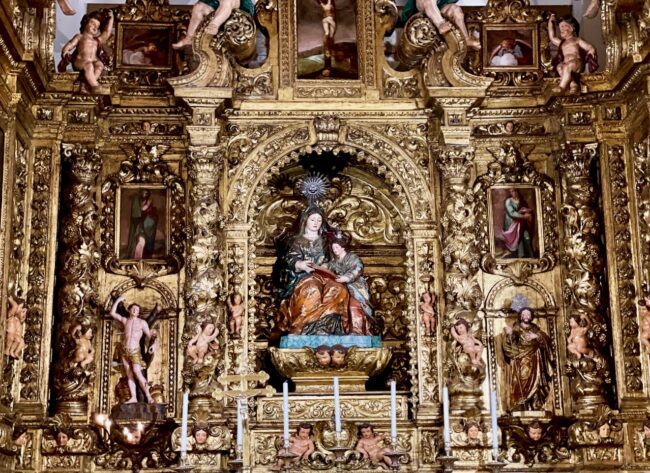
The Capela do Santíissimo Sacramento (Chapel of the Sacred Sacrament) contains a 19th century painting of The Last Supper and quite a chandelier.
In the Baptistery, covered with azulejo tiles (we’d see lots of those on this trip), is the font where St. Anthony was baptized.
Back downstairs we were in the main chapel.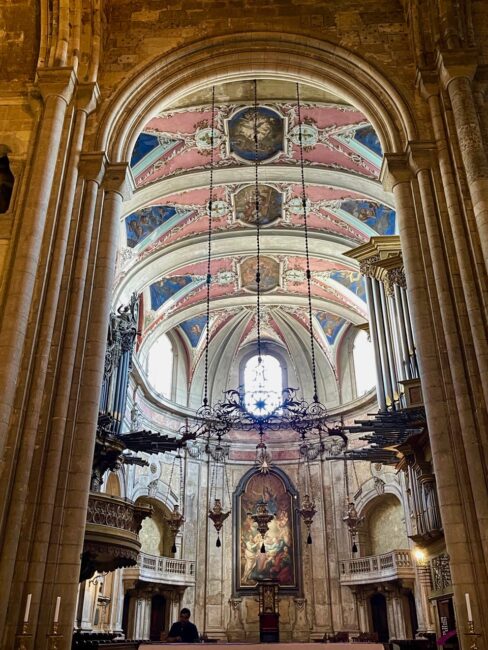
In the Saint Cosmos and Saint Damian Chapel are the tombs of Lopo Fernandes Pacheco, comrade-in-arms of D. Afonso IV, and his second wife Maria Vilalobos.
A faithful dog sits beside Afonso, while Maria is shown reading the Book Of Hours …
… which I assume has 24 chapters.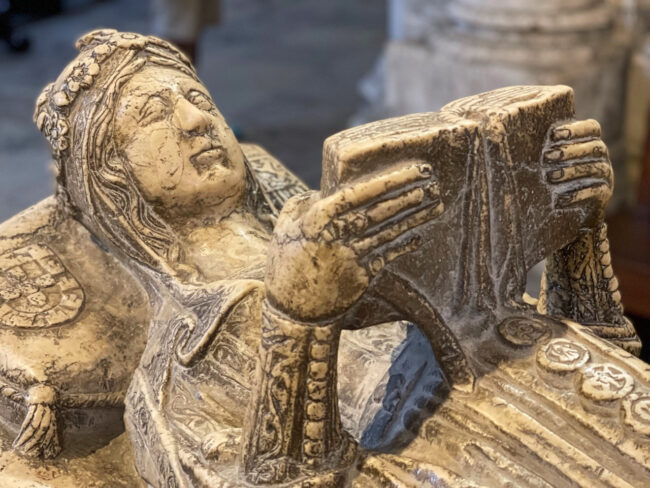
It was getting late in the afternoon, and this being our first day we wanted to get an early start on dinner. Outside the cathedral we saw a plethora of Tuk Tuks, which zoom throughout town giving unsuspecting pedestrians moments of terror, and for its passengers a thrill ride.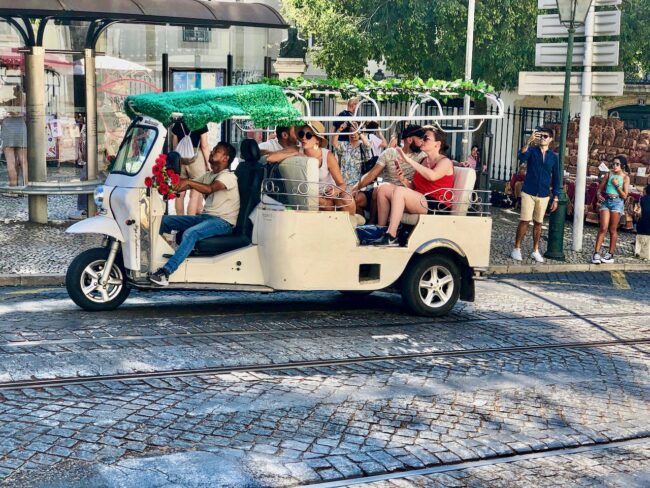
Since it was so hot, Tracy knew she needed a couple of fans. We stopped into a shop where she bought two. The cashier asked if I wanted the purchase in euros or dollars. We, of course, said “euros.” I handed her the credit card, and upon return to the hotel found she had made the purchase in dollars. The mark-up was only 3%, but we certainly paid attention to every purchase we made the rest of the trip.
Walking back to our hotel we passed a store that literally had its product packed in like sardines. Customers were coming in hook, line and sinker.
These colorful cans of sardines made for quite a picture.
After freshening up, Tracy, Mary and I (Kim was still on that dreadful call) walked a short distance to dinner past a lovely lookinghotel.
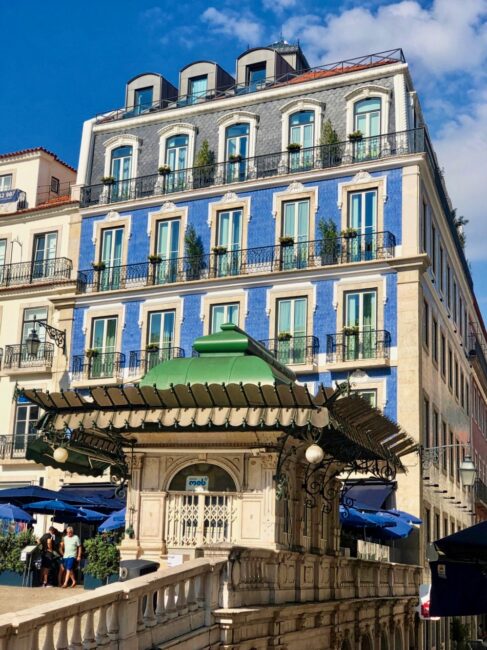 Located just a two-minute walk from our hotel was the restaurant I wanted to dine at on our first night but does not take reservations, meaning arrive early or be prepared to wait. We walked down an alley and arrived at Restaurante Bonjardim (Tv. de Santo Antão 11) at 6:14 p.m. and scored the last table on the patio. Called the Rei dos Frangos (The King Of Chickens), it serves the famed Piri Piri Chicken.
Located just a two-minute walk from our hotel was the restaurant I wanted to dine at on our first night but does not take reservations, meaning arrive early or be prepared to wait. We walked down an alley and arrived at Restaurante Bonjardim (Tv. de Santo Antão 11) at 6:14 p.m. and scored the last table on the patio. Called the Rei dos Frangos (The King Of Chickens), it serves the famed Piri Piri Chicken.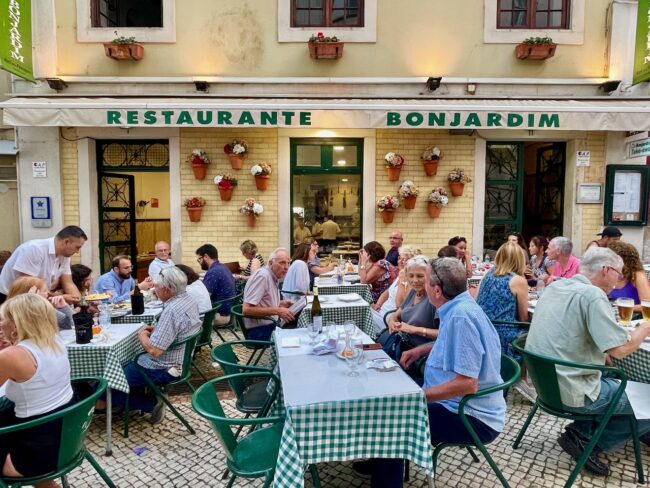
We learned the gentleman sitting at the table next to us was originally from Lisbon and now lives in the states. He said he had been coming here since he was a kid, and he dines here every trip to eat “the best chicken in the world.” As a long-time patron, he also gets a small container of piri piri sauce to take to his dad.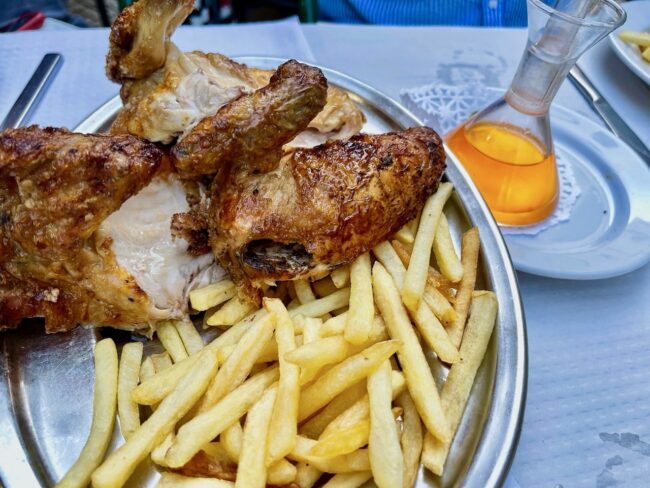
Our waiter guesstimated they sold about 200 chickens per day. I’m guessing more, because virtually every table ordered this delicious crispy half chicken that basically falls off the bone. It is served with that homemade piri piri sauce (secret recipe) that one must use judiciously so as to not burn your lips off. I don’t know if was the piri piri sauce or that I had been up for so many hours in a row that I looked a little dazed and confused when leaving. I was also dazed because our meal consisting of the three chicken dishes, fries, a large mixed salad, a bottle of vinho and a couple of beers only came to €62.
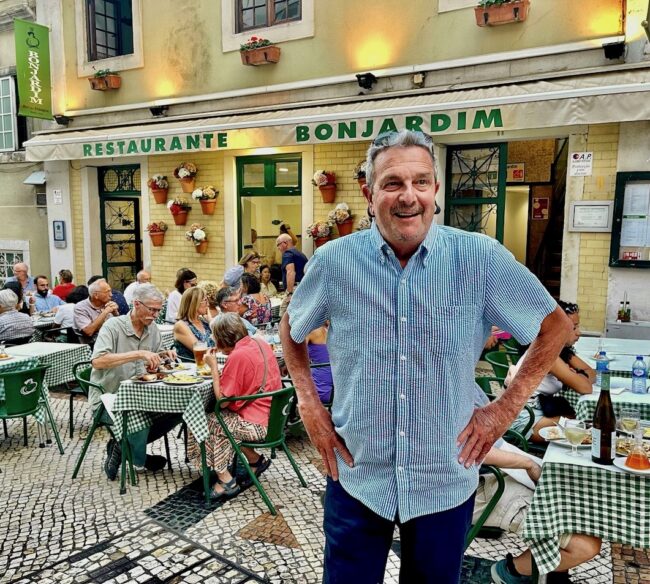 However, we were not done eating. The gentleman next to us also advised us to stop in at the nearby Fábrica Da Nata, which specializes in Pastéis de Natas, or Portuguese egg custard tarts. Created by 18th-century Catholic monks, these Portuguese delicacies could be dangerous if eaten in mass quantities. They were quite good.
However, we were not done eating. The gentleman next to us also advised us to stop in at the nearby Fábrica Da Nata, which specializes in Pastéis de Natas, or Portuguese egg custard tarts. Created by 18th-century Catholic monks, these Portuguese delicacies could be dangerous if eaten in mass quantities. They were quite good.
Afterward, Mary left us to see if Kim was still on the phone, and a little later Tracy and I headed up to the hotel’s rooftop bar and restaurant, the Rossio Gastro Bar. [MaiTai Tom Tip: The bar is reserved only for hotel guests on Monday and Tuesday evenings and reservations are recommended on the other days, as it is a very popular venue.]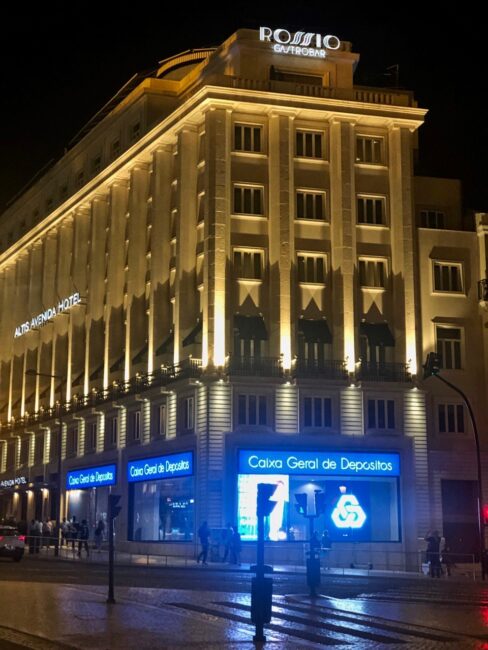
The rooftop provides a commanding view of Lisbon, including Castelo São Jorge, which would be our first stop on Sunday morning.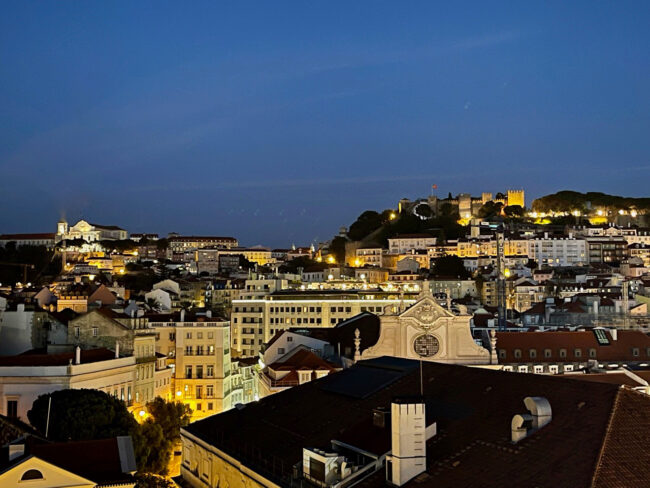
Great views, some vinho tinto along with a friendly and knowledgeable sommelier made for the perfect ending to a rather busy afternoon and evening in Lisbon.
We were glad to get a good night’s rest, because the next day would be a busy one (I guess all our days are busy ones).
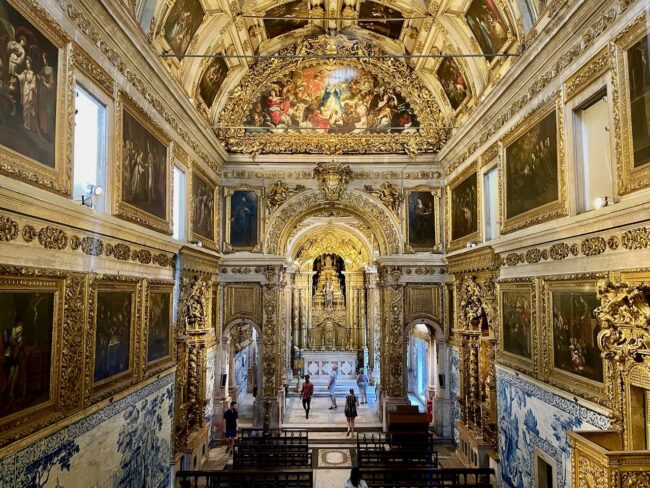 We’d start at the aforementioned Castelo São Jorge, then head over to Moisteiro São Vicente de Fora, Igreja de Santa Engrácia-Panteão Nacional (Portugal’s National Pantheon), walk a way-too-long path to lunch, then on to see some famous Portuguese tile work at the Museu Nacional do Azulejo and its incredible chapel.
We’d start at the aforementioned Castelo São Jorge, then head over to Moisteiro São Vicente de Fora, Igreja de Santa Engrácia-Panteão Nacional (Portugal’s National Pantheon), walk a way-too-long path to lunch, then on to see some famous Portuguese tile work at the Museu Nacional do Azulejo and its incredible chapel.
For dinner, I had made reservations at a place recommended by a host of people. It would be the first of numerous miscues I would make on our trip.
Next: CHAPTER TWO: Exploring Lisbon
Day Two: Out Of Order, Early Birds, By Jorge, When You Gotta Go, Tombs Tiles And Tales, Portugal’s National Pantheon, Greenhouse Effect, Astounding Azulejos, Eavesdropping Helps, Selfie Goes Awry, The Wrong Duque and An Impressed Waiter

